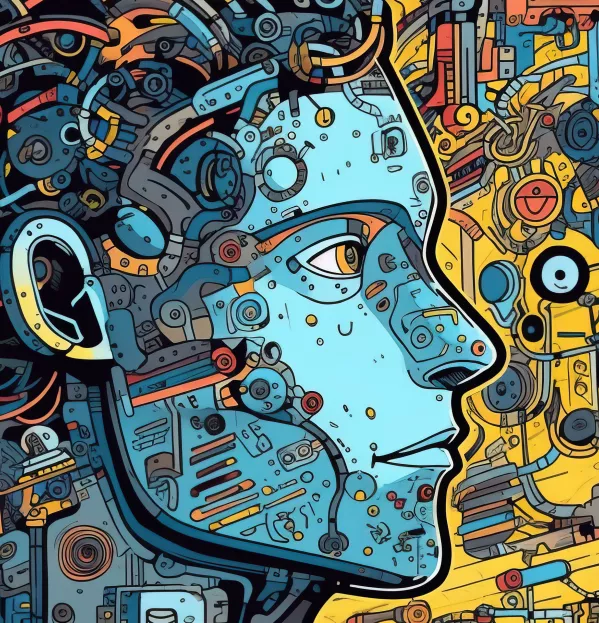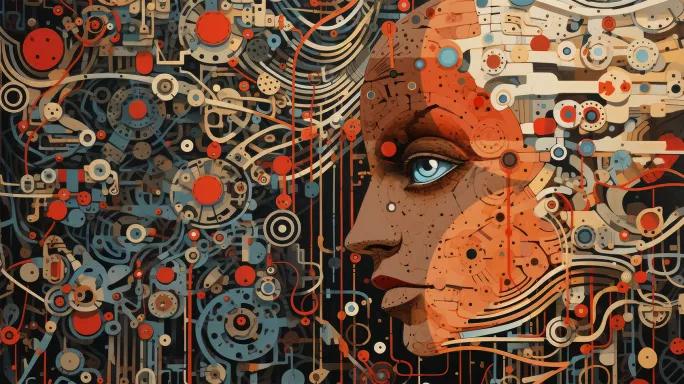The AI challenge for teacher training - and what it’s doing about it

“When is the best time in a teacher’s career for GenAI [generative artificial intelligence] to be introduced as a tool?”
This was the provocative question buried in a Department for Education report on generative AI in education published earlier this year. The report added (for extra spice) that this debate should consider whether the introduction should begin during initial teacher training (ITT) courses.
While this question may have seemed theoretical a few years, or even months, ago, it feels a lot more pertinent now, not least because the DfE’s new ministerial team have given a fairly hearty endorsement for the potential for AI and the resources quango Oak National Academy has now unveiled its new Aila tool.
And, given that it would hardly be surprising if a new teacher - time-poor, stressed and overwhelmed - turned to an AI platform at some point, surely it would be better for them to be taught how to do that well, rather than having to fend for themselves?
That’s very much the thinking at the University of Manchester (UoM). This year its Manchester Institute of Education is piloting the use of a bespoke AI platform developed at the university called TeachMateAI with its primary PCGE cohort.
“If we’re training teachers, we need to train them so when they walk into a school they’ve got all the tools and professional judgement they need,” says Liz Birchinall, reader in education and primary PGCE programme co-director. “So it’s important for us to think about how AI is used. What professional judgement is required? When is it introduced?”
AI in teacher training
This year’s UoM cohort will have access to the new tool to help them with everything from lesson planning to resource creation or generating assessment ideas.
The university team involved will research the tool’s use in the years ahead to see how it impacts on teacher training, explains Mark Carrigan, senior lecturer in education and programme director for digital technologies, communication and education.
“[We need to understand] what it is good for, what it’s not good for, what it can do, what it can’t do, and to understand how, in a particular professional capacity, we encourage people to use it while keeping professional standards and values alive,” he says.
Ensuring that AI does not undermine the status of teaching is something that Professor Geraint Jones, of the National Institute for Teaching and Education at Coventry University, says is his biggest concern. “We’ve got to protect the dignity of the profession from shortcutting,” he says.
Jones worries that because AI can create what appears to be relevant content, trainee teachers could use it and believe they are doing their job - but in reality they will be left worse off in the long term as they will lack core skills.
“As a trainee teacher [if you’re just asking AI to make your lesson plan], you’re not really going through the process of planning lessons for the children in your classroom. You’re not really a professional teacher,” he says.
“If you don’t go through the pain that it takes, over the years, to become a professional teacher because of the thinking that you’re going through, then you will come across problems in the quality of learning in the classroom.”
“We’ve got to protect the dignity of the teaching profession from shortcutting”
This does not mean that trainees will not be taught about AI at Coventry University. However, it will be presented much like any other tool that has pros and cons that need to be explained. “I think what ITT providers have to do is flag its potential dangers and its positive attributes,” says Jones.
That, though, will not be easy because of one of the biggest issues with one-year ITT courses: fitting everything in. “You don’t have the time to spend, for example, a whole module on AI - you’ll just scrape across the top of it,” Jones adds.
Cat Scutt, deputy chief executive at the Chartered College of Teaching, concurs: “There are so many things that you would like to cover but limited time, and so there is a question: what do you replace teaching about to cover this during ITT?”

“That isn’t to say we shouldn’t be looking at teaching AI, but it’s just we need to be conscious that it’s not just another thing to add in.”
Emma Hollis, CEO Of the National Association of School Based Teacher Trainers (NASBTT), says that while it is important to consider time constraints, the scale of the potential impact of AI means that the best approach may to embed it within all areas of training.
“I wouldn’t want to see Al becoming something we do one session on and that’s it,” she says.“We need to be thinking about how we’re integrating that through, say, special educational needs and disabilities (SEND) training, curriculum training, planning training…looking at how AI could be used helpfully - and how it might not be helpful.”
Embedded learning
Hannah Senel-Walp, director of Tes Institute*, says this could certainly be the best approach: “It would help with workload if it was spread out thoughtfully and appropriately...so it’s something visited at the right point and then revisited throughout their programme.”
She admits, though, that there is work to be done to understand how best to do this - not least because those delivering the training have to be as knowledgeable, if not more so, than trainees.
“To be the experts on this, in a way that is reflective of our programmes, what we need to do is make sure we’re bringing it in with purpose - that is why we are very much in an exploration phase, with a view to pilot or trial anything more next year,” Senel-Walp says.
The fact that many providers are still in this exploration phase for a technology that, while still nascent, has been creating headlines in education for more than two years is due, in large part, to the ITT market review, says Hollis. This overhaul of the system left providers with little headspace for anything else.
“AI, and technology generally, is an area we should have been spending the last year or so looking at but we haven’t had the capacity or the ability to do that,” she says.
However, now that the review has been completed, she says providers are moving forward in the technology space and looking to incorporate AI into training.
Are schools enthusiastic?
Even with positive intent in the ITT sector, though, there is the possibility that schools may not be so keen on trainees turning up with an expectation of using AI.
“You could have an ITT provider that’s really enthusiastic but if half the schools they work with say, ‘It’s banned’ - which some schools are saying - then they might be wary,” says Hollis.
Birchinall says that when UoM was discussing its plan to pilot AI tools this year with its own governance group of headteachers, there was a range of opinion - from those that that have already deployed AI tools to those “very sceptical about the idea”.
One trust leader who is very much on board with the idea of trainees being taught about AI use is Lynsey Holzer, CEO of The Active Learning Trust. She says she would expect “new teachers to arrive in their roles with training and awareness of how AI can be best used”.
“As most trusts are providing training and shared resources in AI, trainee teachers will need to enter with this knowledge of how to integrate it into their work,” she says.
James Browning, chief operating officer at Lift Schools, formerly Academies Enterprise Trust, agrees. “AI is something we are all going to have to get to grips with,” he says.

Browning adds that AI should be seen as a “positive development” and, in that spirit, Lift, which provides school-based ITT in partnership with Ark Teacher Training, is “committed to training our ITTs in these skills” in the near future.
“While it’s not yet a formal part of the ITT programme, we see real potential in helping new teachers to use AI in the classroom and to spot when students are misusing it,” he says.
This final point is something that Holzer agrees is particularly important: “As we move into key stage 4 and KS5, the ability to identify inappropriate use of AI is already becoming essential.”
Ethical questions
Even if new teachers are given the skills to use AI with pedagogical purpose and schools are keen on them doing so, there are other major issues surrounding its use - such as the legal, ethical and moral implications.
For example, Scutt says copyright must be a consideration: “There is a plagiarism issue with AI, potentially, around to what extent it is drawing on resources it does not have permission to use, and is that potentially undermining other industries?” she says.
“I think we should be concerning ourselves in the education sector with these questions that in a way some other sectors are less concerned about,” she says.
Hollis, meanwhile, notes that teachers must also understand the reality that any public AI is likely using the data inputted to train itself - something that poses clear safeguarding concerns.
“The whole point of open-source AI is that it’s being trained on the people using it. So if you’re using something with children, you’re effectively using them to train the AI. So there are big questions around that,” she says.
Both Jones and Birchinall say they will ensure their trainees have a clear understanding of the safeguarding and legal risks of AI, given this concern. Birchinall adds that making trainees aware of “the potential for bias” inherent in AI-generated content is also vital.
“One part of our data collection will be document analysis of the resources generated to discover any biases produced by the AI tool, such as diversity in gender and ethnicity,” she adds.
“This will allow us to take forward any learning from the research project to inform trainee teachers in the future.”
For Jones at NITE, all of this underlines that the best approach is to never lose sight of the fundamental skills that a teacher needs and to recognise that AI should only ever be seen as augmenting that work, not replacing it.
“The ethical side of its use is heavily tied into the professional dignity of ‘teachers’ and ‘teaching’,” he says.
While GenAI may not replace teachers, making sure that the next generation of teachers are aware of both its potential and its pitfalls is becoming a necessity.
“There will always be people who use it,” says Hollis. “So it would be better to train teachers and talk to them about how to use it effectively and ethically.”
*Tes Institute is a business division of Tes Global, as is Tes Magazine.

Keep reading for just £1 per month
You've reached your limit of free articles this month. Subscribe for £1 per month for three months and get:
- Unlimited access to all Tes magazine content
- Exclusive subscriber-only stories
- Award-winning email newsletters
topics in this article



